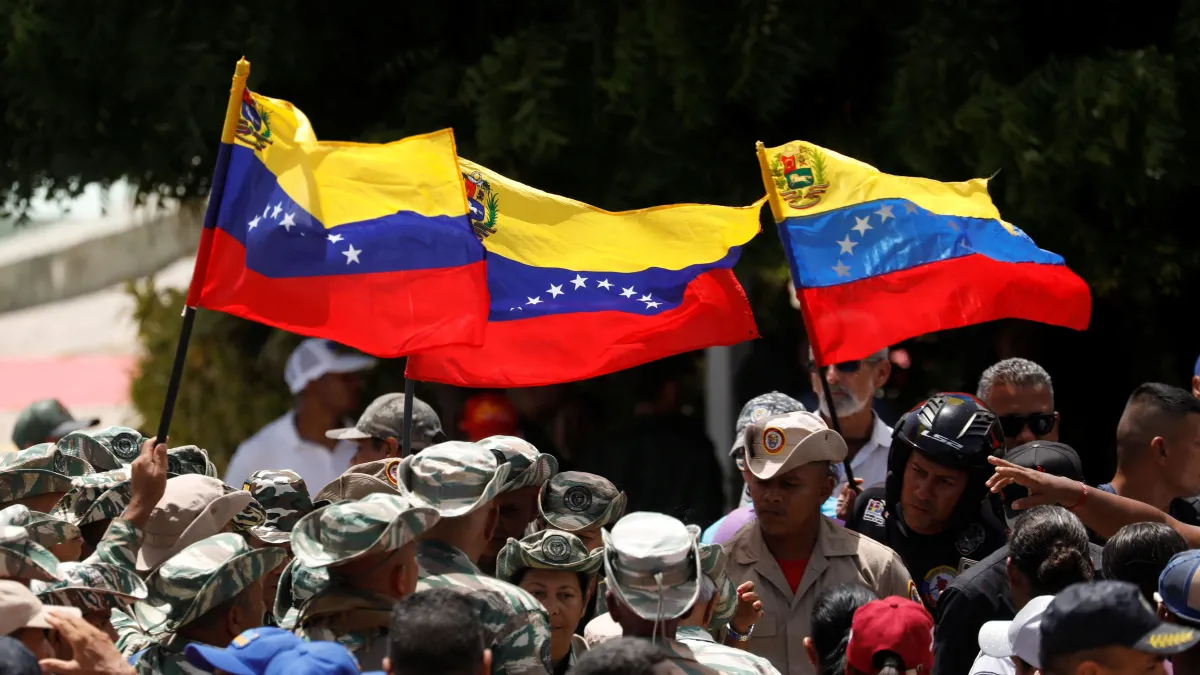On 30 November 2001, British economist Jim O’Neill wrote an article discussing the context of the world economy, with an emphasis on the relationship between the G7 (Germany, Canada, the US, France, Italy, Japan and the UK) and some of the largest emerging market economies.
When reporting on the prospect of accelerated growth in countries like Brazil, Russia, India and China, the economist first used the acronym BRIC, which refers to the initials of the emerging countries mentioned above. Later, in 2010, South Africa joined the group of countries to form the acronym BRICS.
In the early years of the 21st century, there was much discussion about the growth of the world’s main emerging economies and what the impact of this growth would be on the global economy and politics.
These discussions, also driven by the gradual rapprochement between the emerging economies, began to take on more practical dimensions in 2006, when Brazil, Russia, India and China (BRIC) engaged in informal meetings. In 2009, the group adopted a more structured aspect to its discussions and created the BRIC Summit, which has been held annually ever since.
Already in its first year (2009), the BRIC Summit exposed to the international community its conviction that a reformed economic and financial structure must be based on (i) democratic and transparent decision-making and implementation; (ii) a solid legal basis; (iii) compatibility between national regulatory institutions and international standard-setting bodies; and (iv) the strengthening of risk management and supervision practices.
Part of the efforts made by the BRICS from 2009 onwards were made in the wake of the 2008 financial crisis, which raised various questions about the hierarchy of countries in the institutions responsible for global economic governance. This opened up a space for questioning that positioned the BRICS as one of the focal points in discussions on reforming the global economic and financial system.
Fifteen years on from the formal systematisation of discussions within the BRICS, the year 2023 has been analysed as very decisive for the history of the bloc, especially for three reasons.
Firstly, on 24 August 2023, the group announced its expansion process, in which Saudi Arabia, the United Arab Emirates, Argentina, Egypt, Iran and Ethiopia were invited to join the group as full members from 1 January 2024.
Although much has been discussed about the pressure exerted by China, with the support of Russia, to expand the group, making it more political and as a reaction to the recent upheavals in China’s and Russia’s relations with the US and the European Union, the fact is that the expansion of the group signals the interest of other emerging countries in the proposals for reform of the global economic and financial structure put forward by the BRICS.
Secondly, the year 2023 marked a notable advance in discussions and advocacy for the creation of a “BRICS currency” capable of standing as an alternative to the dollar. This discussion stems from the growing need of some emerging countries to have greater independence from the US-led financial system.
Among the most notable advocates of the “BRICS currency” is President Lula, who has on several occasions questioned the use of the dollar for commercial transactions that don’t involve the US, going so far as to say that the creation of a currency for commercial transactions and investments between BRICS members would increase “our payment options” and reduce “our vulnerabilities”.
Finally, the third reason why the year 2023 is significant for the history of the BRICS is the return of the Brazilian government’s interest in actively participating in the bloc’s discussions. In this context, BRICS has been seen, since Lula’s return to the Brazilian presidency, as another international space in which the country can project itself internationally and advance in the pursuit of national interests.
In this way, the year 2023 has been fundamental in determining the direction the bloc intends to take in the coming years and its real capacity to promote substantial changes in the global economic and financial structure.
Sources consulted:
BRICS: como Lula tenta ampliar influência do Brasil no mundo https://www.bbc.com/portuguese/articles/cw9gjy219p2o
BRICS expansion is win for China, with Brazil getting little in return https://brazilian.report/power/2023/08/24/brics-expansion-china-brazil/
BRICS: sources of information https://guides.loc.gov/brics#:~:text=%22BRICS%22%20is%20the%20acronym%20denoting,Economics%20Paper%20No%3A%2066).
Building better global economic BRICS (Jim O’Neil) https://www.almendron.com/tribuna/wp-content/uploads/2013/04/build-better-brics.pdf
Como Brasil se equilibra ante pressão chinesa no BRICS https://www.bbc.com/portuguese/articles/c3gw3eeqyg1o
De-dollarisation: shifting power between the US and BRICS https://www.lowyinstitute.org/the-interpreter/de-dollarisation-shifting-power-between-us-brics
Expansão do BRICS: bloco anuncia 6 novos membros https://www.bbc.com/portuguese/articles/c3gz5nzlny5o
Hierarquia dos Estados no regime econômico-financeiro: os BRICS e a governança econômica global https://repositorio.ipea.gov.br/bitstream/11058/7390/1/TdM_v3_n1_Hierarquia.pdf
Joint Statement of the BRIC countries’ Leaders (2009) http://en.kremlin.ru/supplement/209
Lula volta a falar em alternativas ao dólar, agora com moedas do BRICS https://veja.abril.com.br/economia/lula-volta-a-falar-em-alternativas-ao-dolar-agora-com-moeda-dos-brics



